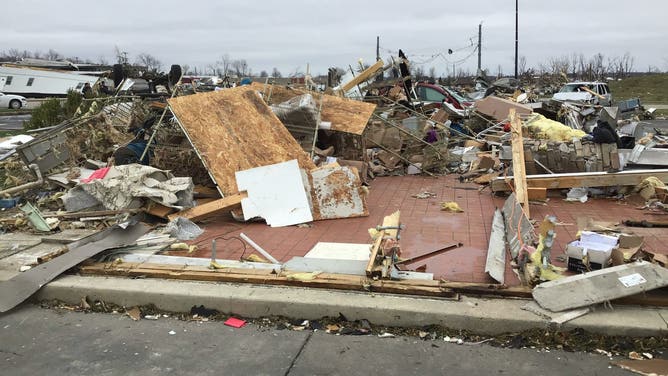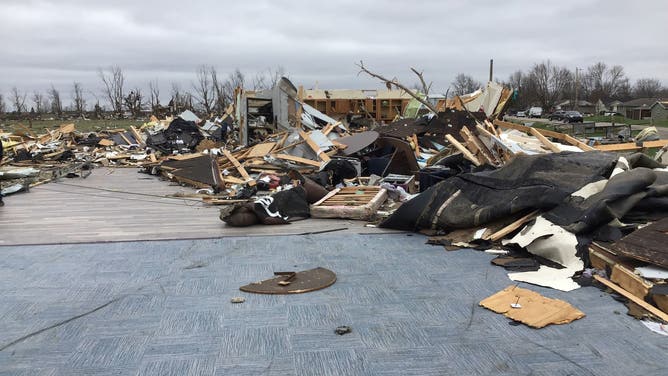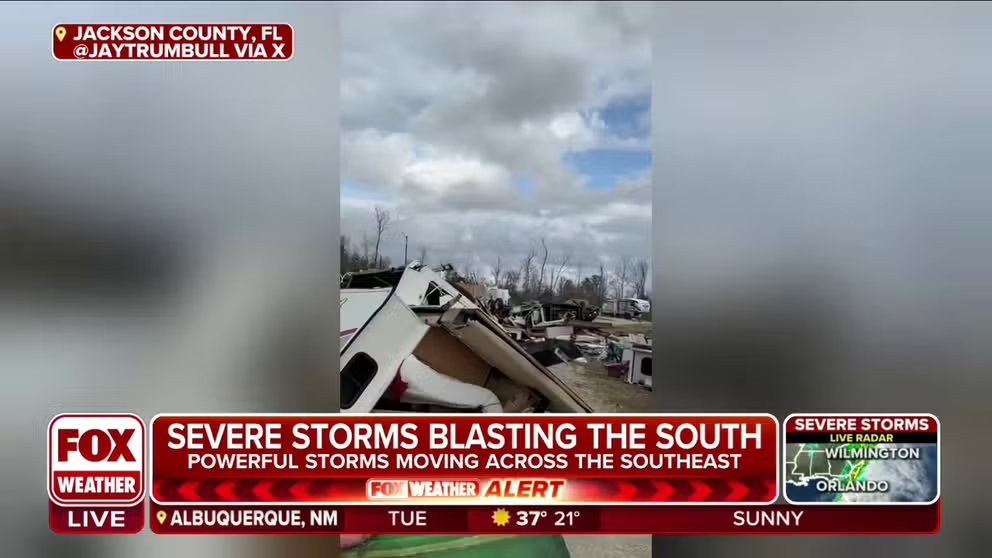How meteorologists determined Indiana’s EF-3 tornado was strongest twister of the year so far in US
A tornado is assigned a rating by meteorologists from 0 to 5 on the Enhanced Fujita Scale. An event that ranks as an EF-5 is considered to be rare and produces catastrophic damage.
Drone video shows extensive damage to businesses in Indiana after tornado
National Weather Service meteorologists believe an EF-3 tornado tore through communities in eastern Indiana on March 14.
WINCHESTER, Ind. – A supercell that developed over Indiana and moved into western Ohio is believed to have spawned the strongest tornado of the year to impact the U.S., with estimated winds of 155-165 mph.
The severe weather outbreak that occurred during the evening of March 14 and the morning of March 15 produced nearly two dozen tornadoes, with many centered over the Midwest.
A team of meteorologists from the National Weather Service office in Indianapolis surveyed damage throughout eastern parts of Indiana less than 24 hours after the storms struck and determined that the tornado that devastated parts of Selma and Winchester reached a maximum rating of an EF-3 on the Enhanced Fujita Scale.
HOW ARE TORNADOES RATED? THE ENHANCED FUJITA SCALE EXPLAINED
Tornadoes are assigned a rating by meteorologists from 0 to 5, with 0 being the weakest on the scale and a 5 being the strongest.
Most tornadoes are rated as either an EF-0 or EF-1 and account for the majority of the 1,200 twisters that strike the country every year.
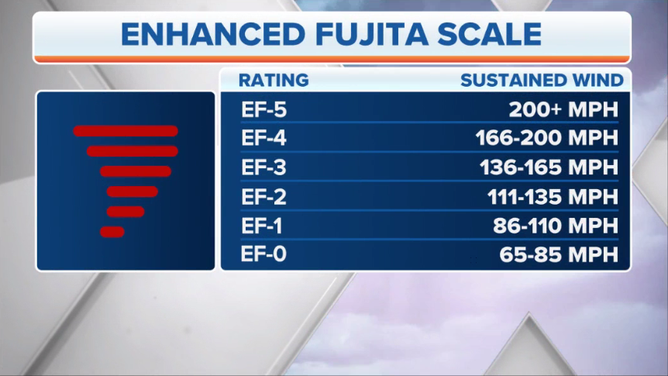
A tornado is assigned a rating from 0 to 5 on the Enhanced Fujita Scale to estimate its intensity in terms of damage and destruction caused along the twister’s path.
(FOX Weather)
SEVERE WEATHER OUTBREAK LEAVES AT LEAST 3 DEAD AS TORNADOES TEAR ACROSS MULTIPLE STATES
It is important to note that during the usually brief lifespan of a tornado, its strength varies, but it always earns the top rating where the damage is usually the most significant.
Meteorologists in Indiana determined that the twister that impacted the eastern region of the state was on the ground for more than 25 miles as it carved a path of destruction in Delaware and Randolph counties.
During its trek, the greatest damage was reported to have occurred on the east side of Winchester, where a Taco Bell and a church building were destroyed.
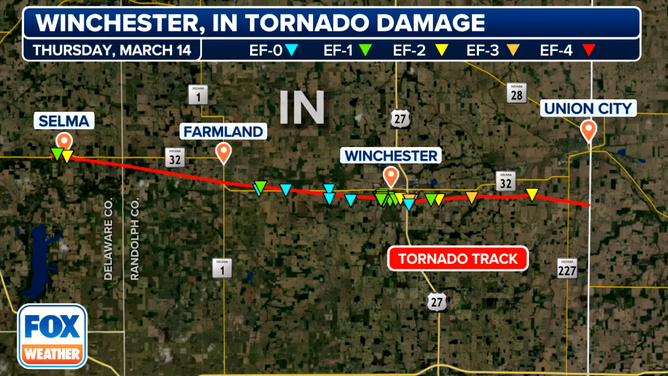
Winchester tornado map
(FOX Weather)
"In this concentrated area, the NWS Team estimated maximum winds of 155-165 mph, or high-end EF3 damage. Maximum path width in Winchester was estimated at up to 0.4 miles or 700 yards," the NWS wrote in a storm summary.
East of the Taco Bell was a small office building, described as a doctor’s office, which was also demolished.
The summary report is detailed and made note of sill plates being ripped up and wood frames with large bolts being completely displaced, which were key indicators to meteorologists of just how powerful the force of Mother Nature was.
Because of the thorough analysis of the remnants of these buildings, meteorologists were able to rate the tornado as a strong EF-3 and just below the threshold for an EF-4, which has winds of 166-200 mph.
Despite the complete devastation to dozens of homes and commercial buildings, there were no reported deaths.
"[We’re] very lucky. There were houses that are leveled, a Taco Bell leveled. So, I really praise the Lord for this one because it could have been really bad," Winchester mayor Bob McCoy said.
At least 38 people were injured during the severe weather outbreak in the Hoosier State, and at least one EF-3 tornado is suspected to have impacted communities around Indian Lake, Ohio.
MAN SURVIVES STRONGEST JANUARY TORNADO IN FLORIDA HISTORY: ‘LIKE NOTHING I’VE EVER SEEN’
Panama City, Florida tornado previously held the record for year’s strongest
Before the Winchester tornado, the year’s strongest twister was considered to be an EF-3 that struck the Florida Panhandle on Jan. 9.
The Florida event began as a waterspout before moving ashore in a neighborhood known as the Lower Grand Lagoon.
Dozens of structures sustained damage during the tornado, which was estimated to have been on the ground for 5.2 miles and had maximum winds of 140 mph.
Despite the tornado striking during the overnight hours, local authorities did not report any significant injuries or deaths attributed to the twister.
Tornadoes leave behind damage in Florida
Severe storms threatened parts of the South on Tuesday causing damage in more than half a dozen states. One of the hardest hit regions was the Florida Panhandle.
Florida was an unusual location to experience such a strong twister, and it is believed to have been the strongest January tornado in the state’s history.
Florida averages between 50 and 60 tornadoes every year, but many remain on the weaker end of the Enhanced Fujita Scale.
Forecasters widely believe an El Niño climate pattern led to a stormy winter across the Gulf Coast, which is fairly typical during non-La Nina years.

